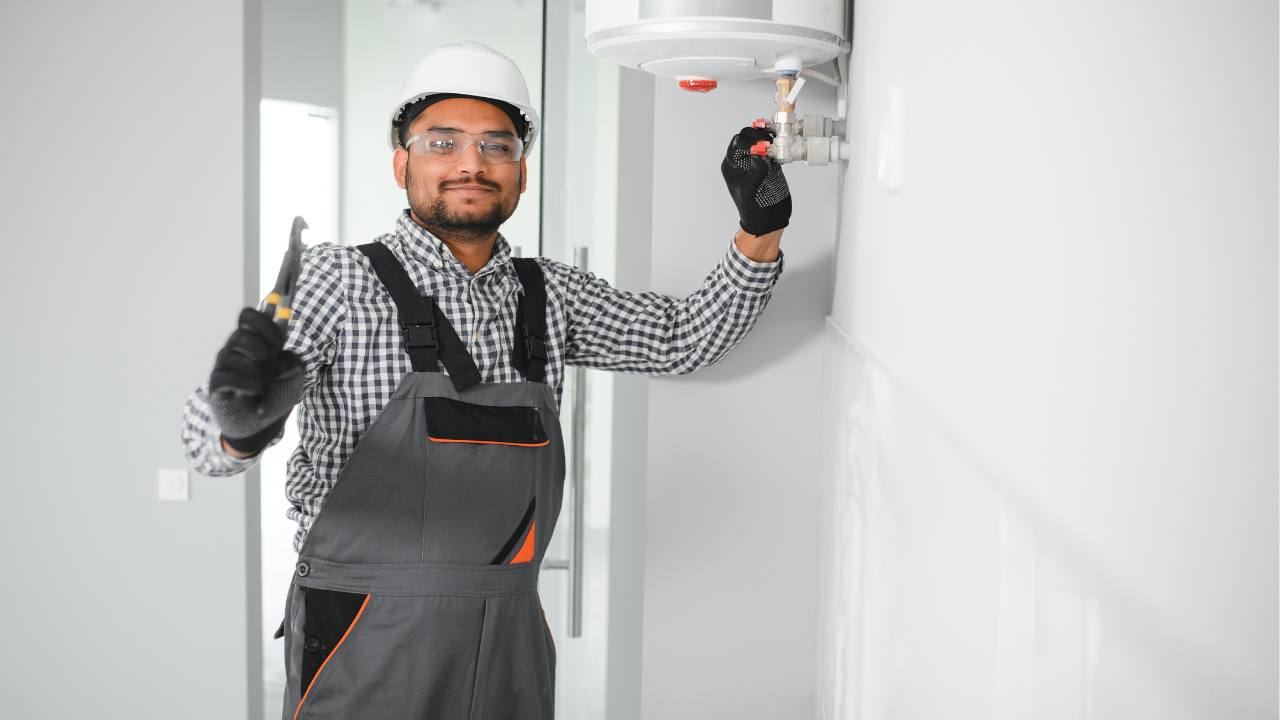When the temperature drops, your plumbing system can take a serious hit. From frozen pipes to unexpected leaks, winter can wreak havoc if you’re not prepared. Winterizing your plumbing not only safeguards your home but also saves you from spending thousands of dollars on preventable repairs. At OnPoint Plumber, we’re here to guide you through this essential process with expert advice and tips to ensure your home stays warm and worry-free.
Why Winterizing Your Plumbing Matters
When water freezes, it expands. This can result in pipe fractures or bursts, causing significant water damage and expensive repair bills. Moreover, plumbing leaks—especially hidden ones—can worsen during winter due to fluctuating temperatures. Preventing these issues early on is easier and cheaper than dealing with their aftermath.
Step-by-Step Guide to Winterize Your Plumbing
1. Inspect for Plumbing Leaks
Start by examining your home for any plumbing leaks. Even a small leak can escalate into a significant issue during freezing weather. Here’s how to check:
-
- Look for water stains on ceilings and walls.
-
- Monitor water bills for unexplained increases.
-
- Test outdoor faucets and hose bibs for drips.
If you spot a leak, contact OnPoint Plumber to address it promptly. Fixing leaks now prevents larger problems later.
2. Insulate Exposed Pipes
Pipes located in unheated spaces like basements, attics, or garages are highly susceptible to freezing. Use pipe insulation sleeves or heat tape to provide an added layer of protection.
Insulation Material Comparison
| Material | Cost | Effectiveness |
| Foam Pipe Insulation | Low | Good for mild winters |
| Heat Tape | Moderate | Excellent for harsh winters |
| Fiberglass Insulation | Low to Moderate | Great for indoor pipes |
3. Drain Outdoor Plumbing
Outdoor hoses, faucets, and irrigation systems need to be winterized to prevent freezing.
-
- Disconnect and store hoses.
-
- Drain water from outdoor faucets.
-
- Shut off the water supply to exterior pipes, if possible.
4. Keep Indoor Pipes Warm
Cold indoor areas can be a breeding ground for frozen pipes. Here’s how to maintain warmth:
-
- Leave the cabinet doors beneath sinks open to enable warm air to circulate around the pipes.
-
- Maintain a consistent indoor temperature, even when you’re away.
-
- Use space heaters in especially cold areas.
5. Install a Smart Leak Detector
Advanced technology can detect leaks early, helping you address potential issues before they escalate into major problems. Smart leak detectors monitor your plumbing system and send alerts to your phone when they detect unusual activity. OnPoint Plumber can help with installation and recommendations for the best systems.
6. Consider Professional Winterization Services
For homeowners who prefer a hassle-free solution, professional winterization is the way to go. OnPoint Plumber’s team offers comprehensive winterization services, making sure every detail is covered—from inspecting leaks to insulating pipes. Reach out to us for expert care tailored to your home.
Typical Winter Plumbing Challenges (and Ways to Prevent Them)
| Issue | Cause | Solution |
| Frozen Pipes | Lack of insulation | Insulate pipes; use heat tape |
| Burst Pipes | Freezing water expansion | Maintain a consistent temperature |
| Clogged Drains | Grease and debris buildup | Avoid pouring fats/oils; clean drains regularly |
| Water Heater Malfunctions | Extra demand during winter | Schedule a water heater check with OnPoint Plumber |
Pro Tips to Dodge Costly Repairs
– Prevent Clogs Before They Happen: Never pour grease, oil, or coffee grounds down your drains. These substances solidify in cold pipes, leading to blockages.
– Install Frost-Resistant Faucets: Swap out regular outdoor faucets for frost-resistant ones to minimize the risk of freezing during colder months. This simple upgrade can save you from frozen faucet disasters.
– Inspect Your Water Heater: Winter demands more hot water, which can strain an old or inefficient water heater. Have it serviced or upgraded by OnPoint Plumber before temperatures drop further.
– Know Your Shut-Off Valve: In case of a burst pipe, you’ll need to act fast. Locate your home’s main water shut-off valve and ensure it’s accessible.
Why Choose OnPoint Plumber?
At OnPoint Plumber, we combine expertise with a customer-first approach. Whether you’re winterizing your plumbing or need emergency repairs, we’re dedicated to delivering top-notch service. Our team is:
-
- Highly trained in all aspects of plumbing.
-
- Available for same-day and emergency services.
-
- Committed to providing transparent pricing.
Protect your home this winter by trusting the experts who care. Visit onpointplumber.com to learn more about our services.
Frequently Asked Questions
What temperature causes pipes to freeze?
Pipes typically freeze when temperatures drop below 20°F. Insulating your pipes can help prevent freezing even in extreme conditions.
How do I find hidden plumbing leaks?
Look for signs such as water stains, musty odors, or unexplained increases in water bills. Smart leak detectors can also help identify hidden leaks.
Can I winterize my plumbing on my own?
While basic steps like insulating pipes are DIY-friendly, professional winterization ensures all aspects are covered. Contact OnPoint Plumber for expert help.
How often should I check my plumbing in winter?
It’s a good idea to inspect your plumbing every few weeks, especially after extreme cold spells.
What should I do if a pipe bursts?
Immediately shut off the main water supply and contact a professional plumber. OnPoint Plumber offers emergency services to handle such situations promptly.

